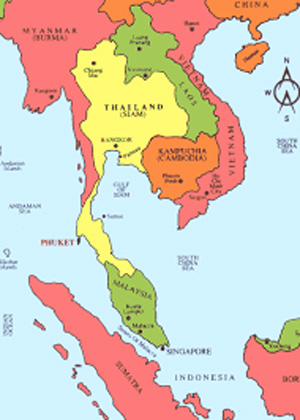
The article explains the characteristics and current situation of abrasives industry in southeast Asian regions, which is a huge potential market for China's abrasive companies.

Thanks to the geographical location, most southeast Asian nations are major trade partners of China. ASEAN (Association of Southeast Asian Nations) members are developing countries, Singapore excluded. The economic structure of developing countries, such as Vietnam and Laos, is simple, and agriculture is the major economic sector. While most of their products, such as clothes and textiles, belong to the light industry.
Currently, most southeast Asian nations do not have an integrated abrasives industry. There are no large abrasives manufacturers with a complete range of abrasives products, and abrasive companies are scattered. At METALEX 2014, most abrasives manufacturers of Thailand are subsidiaries of Japan, South Korea, and China Taiwan enterprises. Their production mode is to import primary raw materials and reprocess abrasives products, such as shank-mounted flap wheels, wire wheels, abrasive sanding belts, non-woven flap wheels, etc. The products are low in technological content and added value. Most abrasives products are imported from foreign countries, so these nations are highly dependent on import. Importing countries include China, Japan, South Korea, U.S., and other countries and regions of EU.
With the rapid development of China's economy, problems such as rising labor costs, land price, manufacture costs, arise. Some abrasive companies began to invest in southeast nations that have cheap labor force. Part of abrasive companies have moved their factories to Thailand and Vietnam.
According to the latest statistics from China Customs, in Jan 2014, Vietnam's total export-import volume was $21,480,000,000, a decline of 9.9%. The import volume was $10,020,000,000, a decline of 17.8%. The import goods were machines, equipment, tools, and accessories. Report from Vietnam media say that during the first eight months of 2014, Vietnam's exports to China maintained a good momentum of growth, and that the export volume to China is expected to reach $15,000,000,000 within this year. U.S. and Japan remain the most important trade partners and investors of Philippines. There is an obvious growth in abrasives trade between China and southeast Asian nations, despite the fact that Indonesia, Vietnam, and Cambodia unstable market trend that leaves Chinese abrasive companies little interest.
The abrasive companies marketing strategy in European markets is low price, however, for southeast Asian markets, Chinese abrasive companies are suggested to lead the market trend based on competitive advantages. The average wage in Vietnam is less than 1000 Yuan, and Burma is rich in mineral resources, and major industries in Thailand are stone, construction, and Jewelry making industry. The situation is a good opportunity for China's abrasive companies that depend on cheap labor force and energy consuming.
In terms of technology, although China's the overall technological level of China's abrasives companies is not at the front, it is undeniable that China has some competitive advantages in the abrasives industry. The bilateral cooperation will bring more benefits in the long run.
In view of market development and product competitiveness, Chinese abrasive companies consider southeast Asian markets as the second trade regions. With the preliminary industrialization of southeast Asian nations, there is an increasing demand for abrasives products. in addition, China should try hard to meet all demands by making clear product features and marketing strategies of competitors.
After all, the situation that southeast Asian nations' industrial products depend on import is not likely to change in a short period. Therefore, the market potential and vitality is huge. China's abrasive companies can shift excess production capacity to southeast Asian regions where cheap labor force and rich resources coexist. Since these regions are important markets and manufacturing bases of Japan, South Korea, and Taiwan, China's abrasive companies can learn from advanced technologies and new developing trend to improve international competitiveness and popularity of independent brands.
Author: Liwei Chu
Copyright: iAbrasive.com--Abrasives & Diamond Tools Market